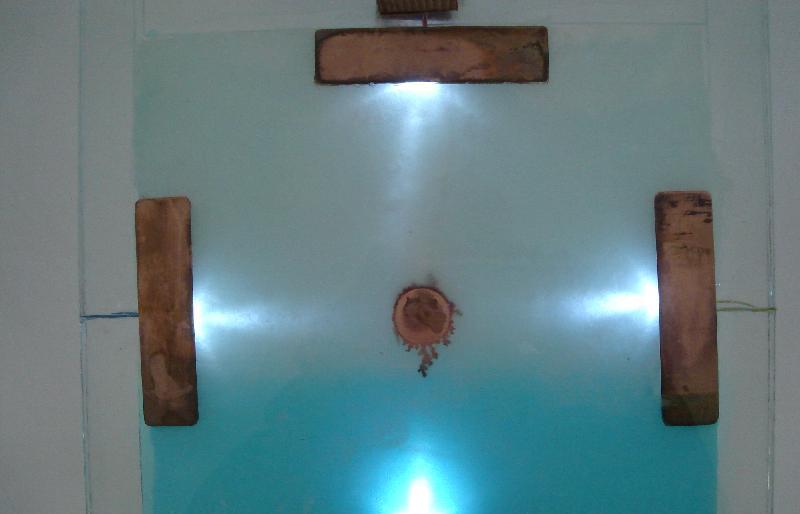
Leonardo Abstract Services (LABS) 2010-2012
Neocybernetic Art or Affect and Conversation in the Animal and the Machine
The investigations into the existence of an art based on second order cybernetics are not explicitly directed to systems art neither to cybernetic art proper, artistic manifestations that since the 60’s would be most likely associated with kinetic objects, video feedback sculptures and, more recently, with any form of installation-based art generically designated as “interactive”. And it only slightly touches the second-order paradigm, although it incorporates some of its canonical assets, for instance, recursive processes, self-organizing systems and, most importantly, the principle of “participant-observer.” The aim of this thesis is to promote the classical cybernetic art genre to an upper level, marked by a qualitative change on aesthetics experiencing. The bottom line is that art objects belonging to this speculative genre, tentatively named neocybernetic art, are brain-like artifacts which attain a new functioning order after a recurrent feedback between disparate internal components and disparate external elements crosses a certain threshold; and most importantly, this transient event occurs throughout the course of the artwork’s individuating process defined not by a sui generis genesis, but by a continuous ontogenesis.
The study is founded on the ideas of two original thinkers, Gordon Pask and Gilbert Simondon, specifically their Theory of Conversations and Individuals. The speculative scheme adopted in our proposed thesis relies on an “open ended axiomatics”(borrowing the term from Simondon), and tries to predicate not a brute force coupling of two apparently disparate (albeit powerful) “mechanic philosophies”, in the likes of an unmindful jumble, but rather posit a candid conversation between them, or an analog relationship, so to speak. It would not be nonsensical to claim that the purpose conflating the works of Simondon and Pask is to assert a relative convergence of some of their world view and discursive eclecticism, without running the risk of falling prey to a ingenuous poetic license, accepting the interrelation at face value or even simulating a Freudian technique of free association. All told, we will try to find communicating vessels between Pask’s explanatory ontology combined with epistemology and Simondon’s genetic ontology, carefully grafting one onto the other, without entering into manifold relations not exclusively implied in the aesthetic hypothesis described by the theory builder (the author).
Finally, this thesis looks at the practices of artists, who, in different ways, explore the workings of emergent circular causalities in the animal (particularly with emphasis on fish, or paraphrasing Jussi Parikka, on “fish media”) and the machine (“emancipated” technical individuals, according to Simondon). Holding a non-mechanist standpoint, it slightly draws, for the sake of introduction and inspiration, on Philosophy of Technology, Radical Constructivism, Animal Studies, Cognitive Aesthetics, and Perspectival Anthropology, a cosmology that imagines a universe peopled by different types of subjective agencies, people and animals that see themselves as human observers. Be it a piece built with robotic soft-material, a biotechnological system constructed as a means of facilitating the interaction of humans and animals, or a plexus composed by chemical elements, when a specific circular causality emerges from a current functioning by means of a Simondonian affectivity, something new leaps into existence, as if the artwork was possessed by what Jane Bennett calls the “vibrant materiality.” The common denominator cutting across all of them could be well designated by the expression “aesthetics of becoming”, in which the notion of finished and authored artworks, in addition to the opposition between subject and object, is reformulated.
Degree: MA in MediaArtHistories
Year: 2012
Pages: 120
University: Danube University Krems
Supervisor: Paul Pangaro
Semail: pan@pangaro.com
Supervisor 2:
Language: English
Dept: Center for Image Science / MediaArtHistories
Copyright: Creative Commons
Lang_author: English, Spanish, French, Portuguese
Url: http://tinyurl.com/l2lskdn
Email: kujawski@gmail.com
Keywords: Cybernetics, Philosophy of Technology, Radical Constructivism, Animal Studies, Perspectival Anthropology
LEONARDO ABSTRACTS SERVICE (LABS) is a comprehensive collection of Ph.D., Masters and MFA thesis abstracts on topics in the emerging intersection between art, science and technology.
If you are interested you can submit your abstract to the English LABS, Spanish LABS, Chinese LABS and French LABS international Peer Review Panels for inclusion in their respective databases. The authors of abstracts most highly ranked by the panel will also be invited to submit an article for consideration for publication in the refereed journal Leonardo.
